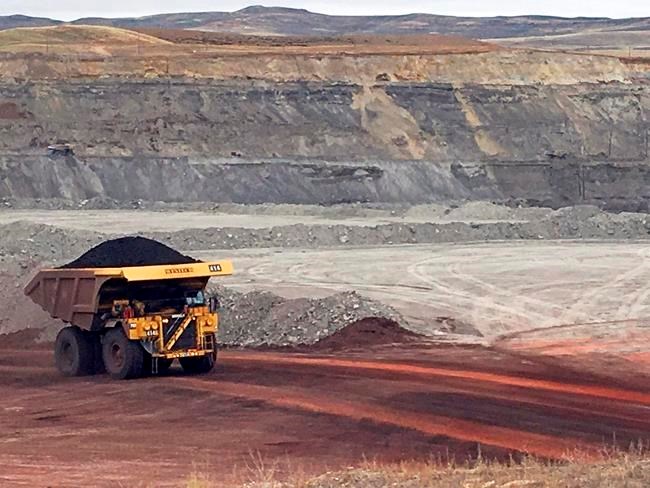EDMONTON — The Alberta government is changing its coal policies in a move it says is intended to make it easier to develop open-pit mines in one of the province's most sensitive areas.
"Government is placing a strong focus on creating the necessary conditions for the growth of export coal production," says a news release dated May 15.
The changes, to come into effect June 1, abolish graduated protections that have been in place since 1976 for land in Alberta's southwestern foothills.
The vast area of mountains, streams and meadows is home to threatened species such as grizzly bears and contains the headwaters for much of the fresh water in the southern prairies.
It has also been logged and mined for decades. The region produces coal for steel-making, not power generation.
Under the old rules, top protection was applied to the most sensitive land where no development was allowed. That classification remains.
Three lower levels allowed progressively more activity in proportion to the environmental value of the land. Those regulations were applied in advance of any assessment by the Alberta Energy Regulator.
Nissa Petterson of the Alberta Wilderness Association said it was an attempt to handle overall land management on a busy landscape.
"It operated at a higher level than a project-by-project basis," she said. "It was a high-tier, overarching policy."
Now, all coal mine applications are to go straight to the regulator for a case-by-case assessment.
The regulator will apply the same standards as before, said Alberta Energy spokesman Kavi Bal.
"None of the rules have changed," he said Thursday.
The intent was to bring coal assessments in line with those the regulator uses for oil and gas proposals, said Bal.
"(The previous policy) didn't line up with anything else we do."
Those assessments have often been criticized as leading to piecemeal decision-making. It is also extremely rare for the regulator to turn a proposal down.
Kevin Van Tighem, spokesman for area landowners, points out the regulator is currently considering a number of coal applications.
"The timing couldn't be more obvious," he said. "Right when we have a series of major strip-mine proposals waiting for approval, suddenly this policy complication is quietly moved out of the way."
Van Tighem said the Oldman River, which springs from the area, is a crucial water source for the southern plains as far east as Saskatoon. He points out there's already a moratorium on new water licences in southern Alberta because of demands on the Oldman.
"All that water comes from a headwaters landscape. It all depends on having a landscape that's porous and vegetated. And we're proposing to strip-mine it."
Van Tighem noted that coal mining can create serious environmental problems. In British Columbia, Teck Resources' Elk Valley mines have produced contamination so severe it's raising concerns downstream in the United States.
Van Tighem and Petterson point out the changes were made without any public consultation.
Bal said the regulator already considers land-use planning and called the old categories "an empty shell." He said new rules will provide more clarity to industry.
This report by The Canadian Press was first published May 21, 2020
— Follow Bob Weber on Twitter at @row1960.
Bob Weber, The Canadian Press



